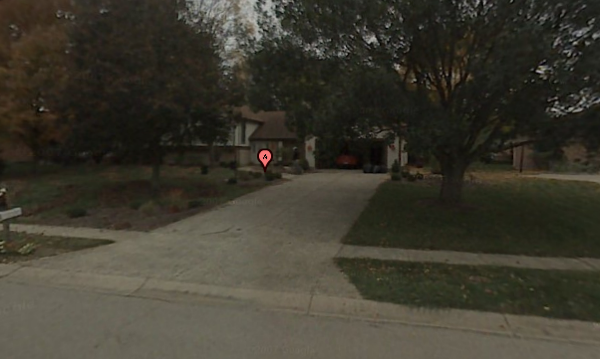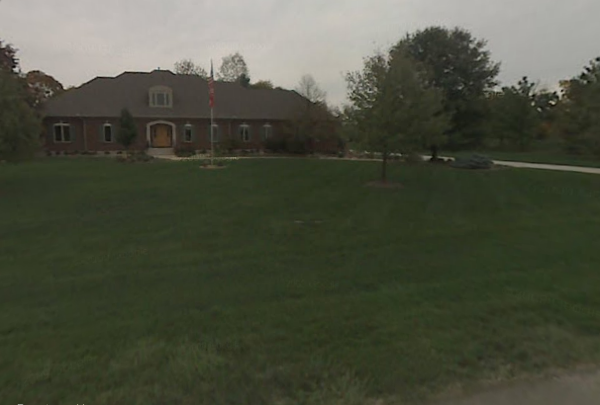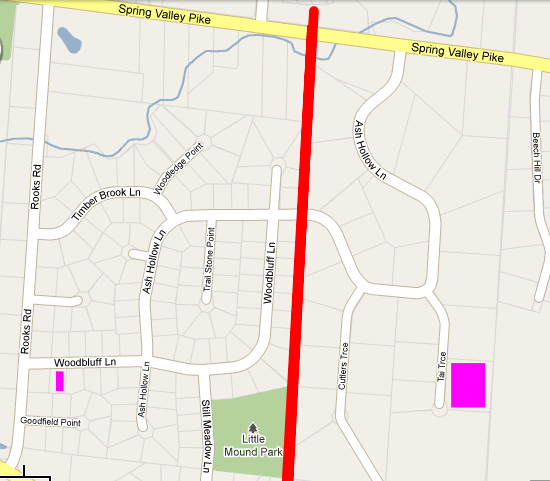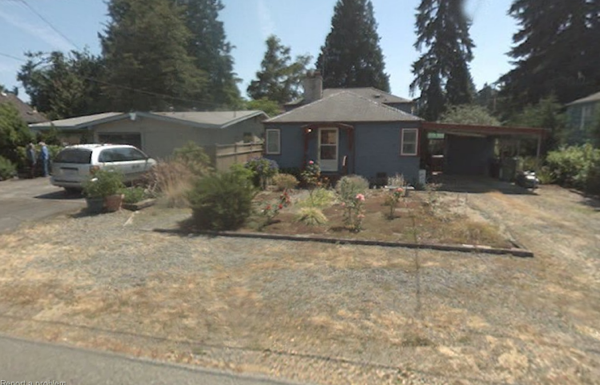Homeownership, Part Duex
So I did a pretty poor job on my last entry of making my argument.
I’ve decided to take a look at the home I spent a bunch of time growing up in the Dayton Ohio area.
Lets take a peek at it, courtesy Google Street View:

So things to note:
- The sidewalk in the front yard.
- The house is pretty far set back from the street. About 50 feet from the street.
- There is no space to socialize in front of the house. (e.g. there isn’t a porch or somewhere to sit.)
- You can’t see it in this photo, but the road is about three car widths wide.
So lets compare this to the house of my mom’s divorce attorney. This house is in a much newer part of the development, probably about ten years newer. But it is less than a mile from my house above. Again, courtesy Google Street View:

- No sidewalk in the front yard.
- The house is even further set back from the street. About 100 feet from the street.
- There is still no space to socialize in front of the house. Not that you could talk, you’d have to yell, since the next nearest front door is about 200 feet away!
- The road is only two car widths wide, but it is completely unadorned. It is just a strip of asphalt.
One final picture. This one showing the lot sizes and shapes.

So I’ve done some drawing on this. The pink box to the right is my house off of Woodbluff, the pink box to the right is my mom’s lawyer’s house. The red line? Thats showing where the division from the older and newer development. The change in lot sizes is pretty damn dramatic. I lived here for probably a total of eight years, I rode my bike through both of these areas, and it still surprises me.
So I’d argue that this big change hasn’t really done much for the community. Hell, its even hard to have a community when you’ve got a huge piece of grass separating you from everyone. The owners of these houses probably paid more, and I’d argue got less! If you’re buying a home simply because of square footage, and not the community or lack thereof, why? Just like money having square footage of a house is important up to a point, but beyond that it doesn’t do much except show off the fact that you have square footage. If anything its a negative as it costs more to maintain and more to heat.
So, if I had to choose a house to live in instead of a nice condo or something along those lines, I’d like to live in on a street like this one in Seattle:

The houses:
- Aren’t too big.
- They’re pretty closely spaced, so you can easily talk with your neighbors.
- There is a little bit of space to congregate up front
- They’re close to the road, sparing a big field of grass that doesn’t get used.
- Alas, there is no sidewalk.
- The street width (which you can’t see) is just about two cars wide.
This housing development in Wedgwood in Seattle has a fair chance of developing actual community. Whereas, the neighborhood I lived in Dayton didn’t have as much of a chance and my mom’s lawyer’s house? Well its laughable to even consider the matter?
So this brings me back to the blog’s theme. Communities build resilience and allow for people to network, which further more allows them to eschew having to purchase as many things and push the cogs in the consumerist machine. This manifests itself in situations like when you need to use a pressure sprayer, you’re much more likely to be able to borrow it from someone in your community, the larger and more connected you are, instead of having to buy one for that single use.
By having resilient communities you’re able to do the same with less, lessening the effects of class-stratification, and mitigating the results of class warfare.
A strong community is more important than being wealthy, a community can provide the things that wealth does, and more.